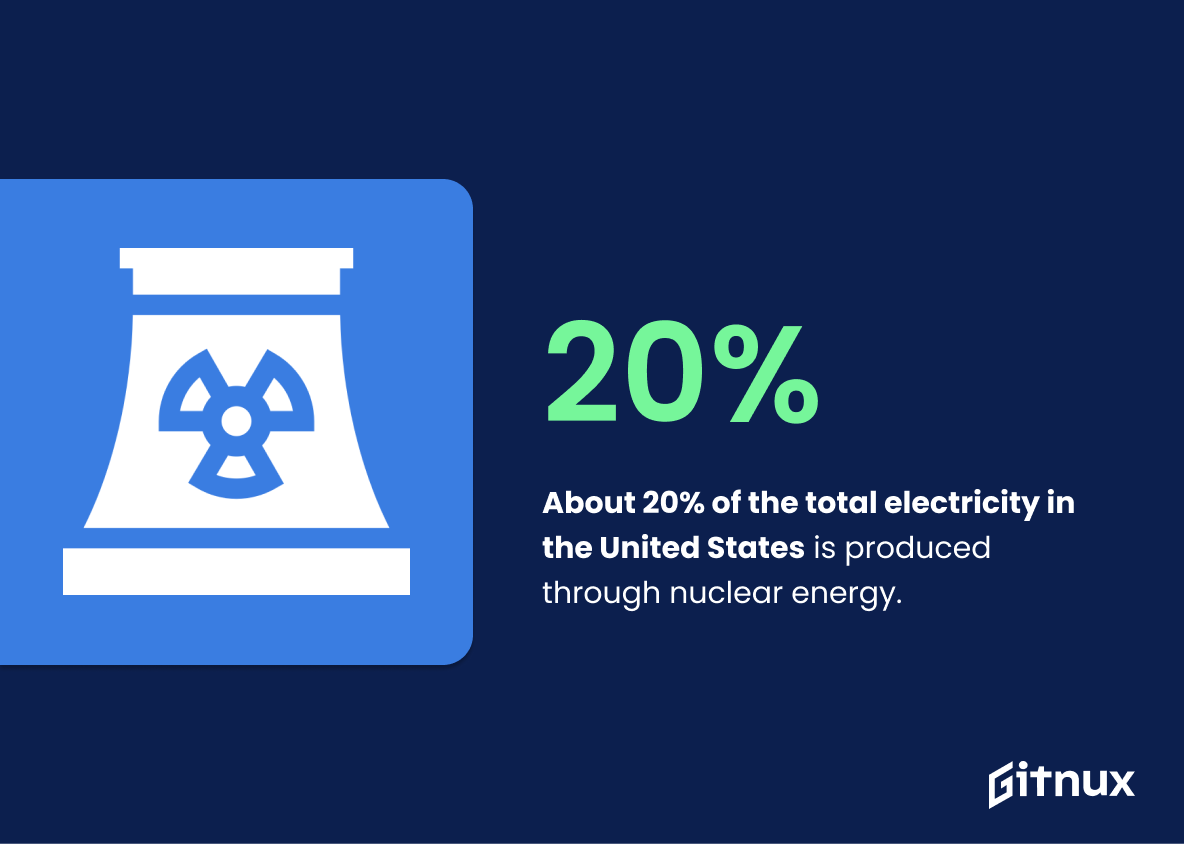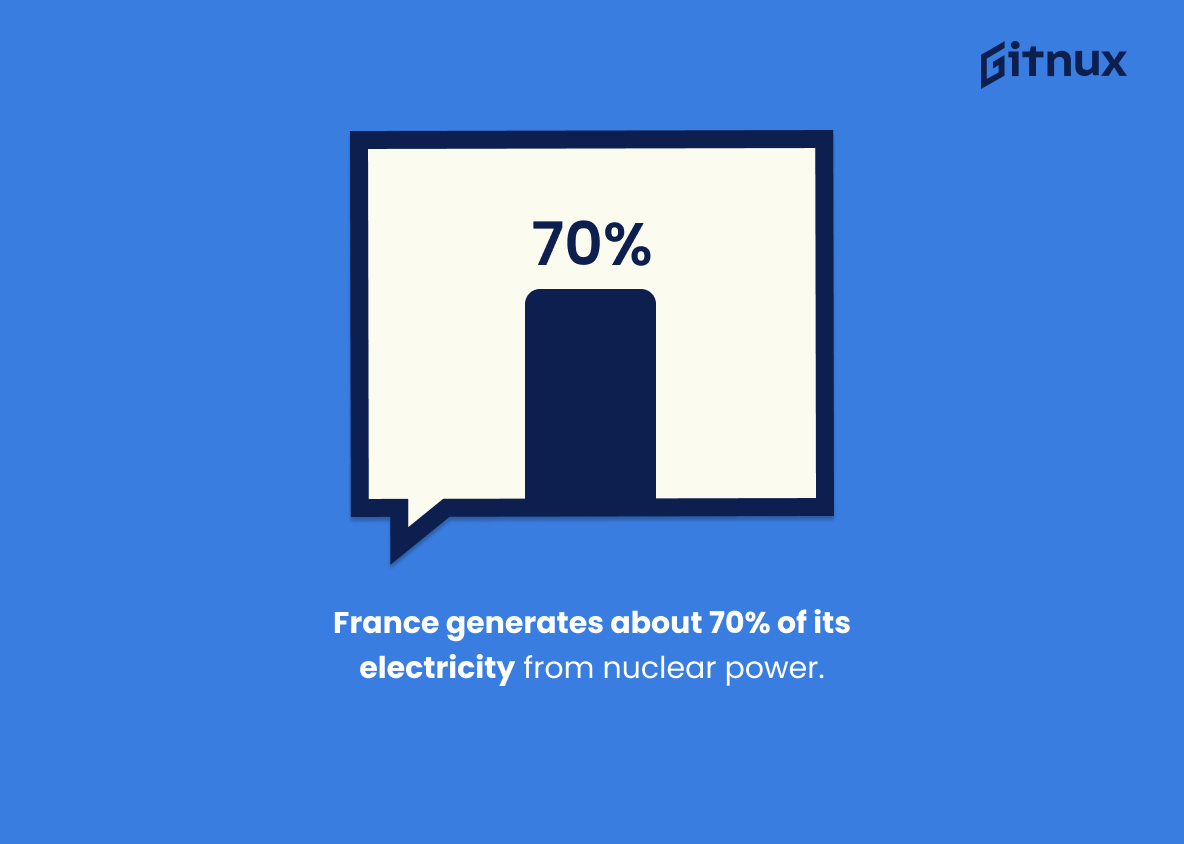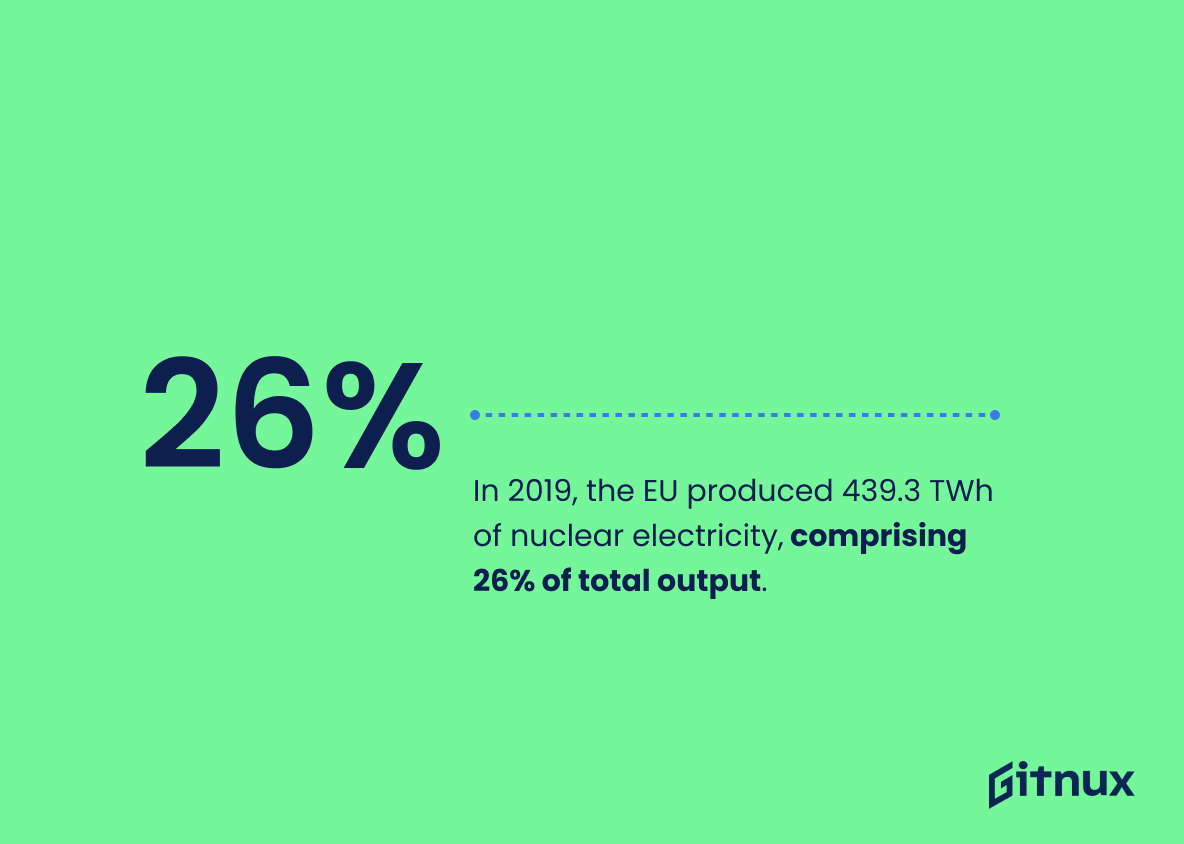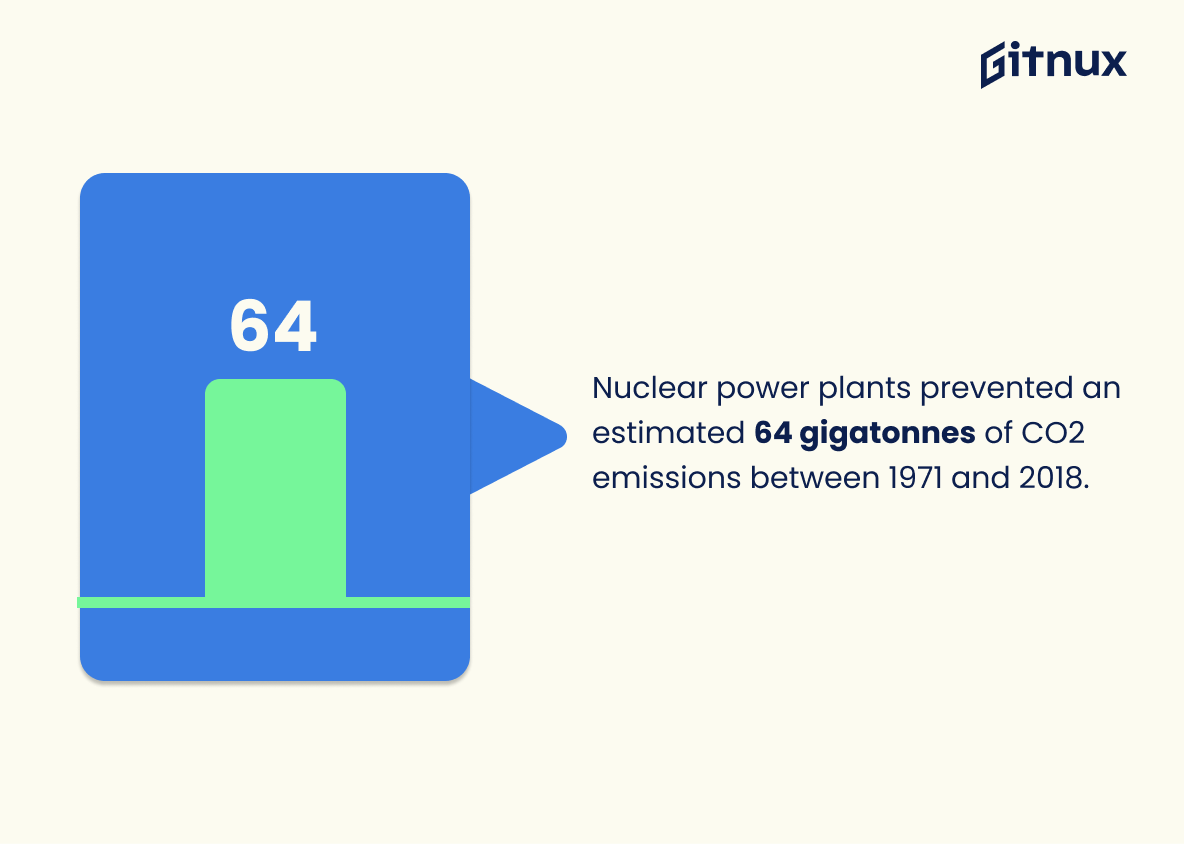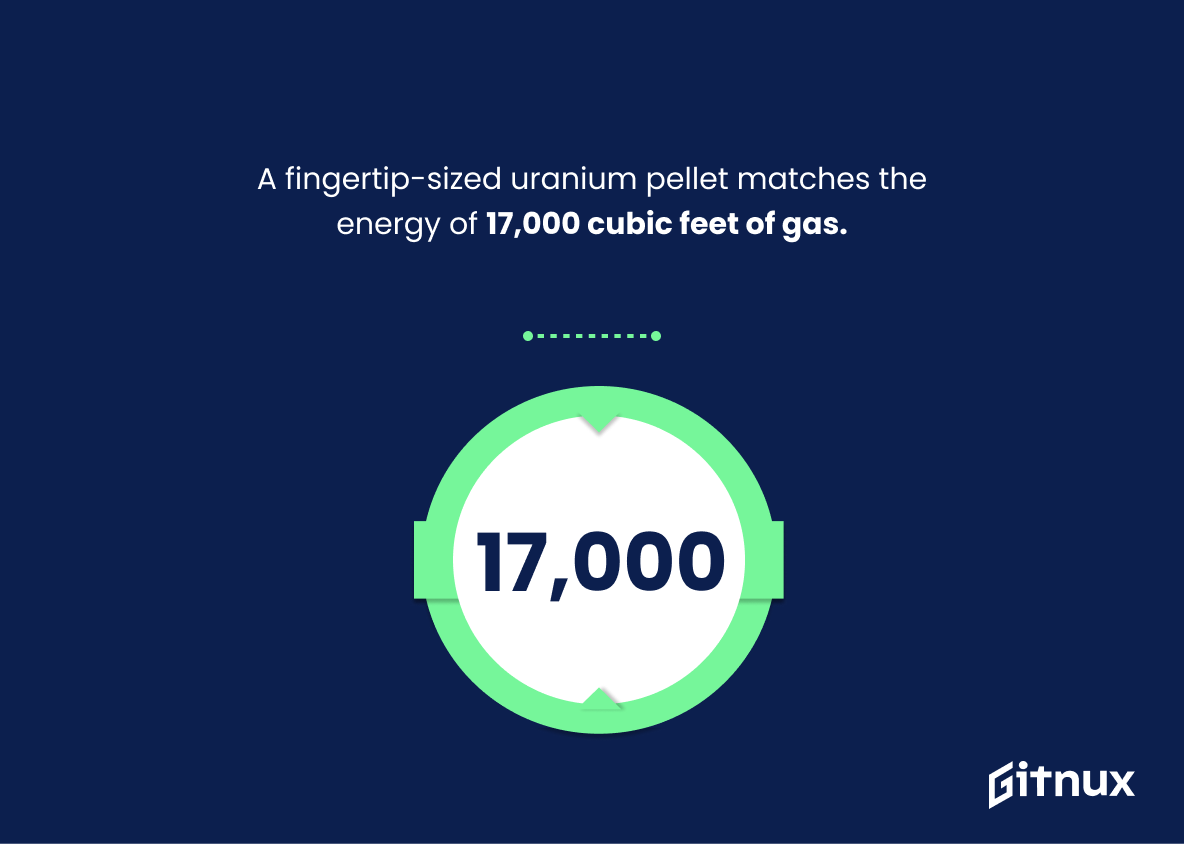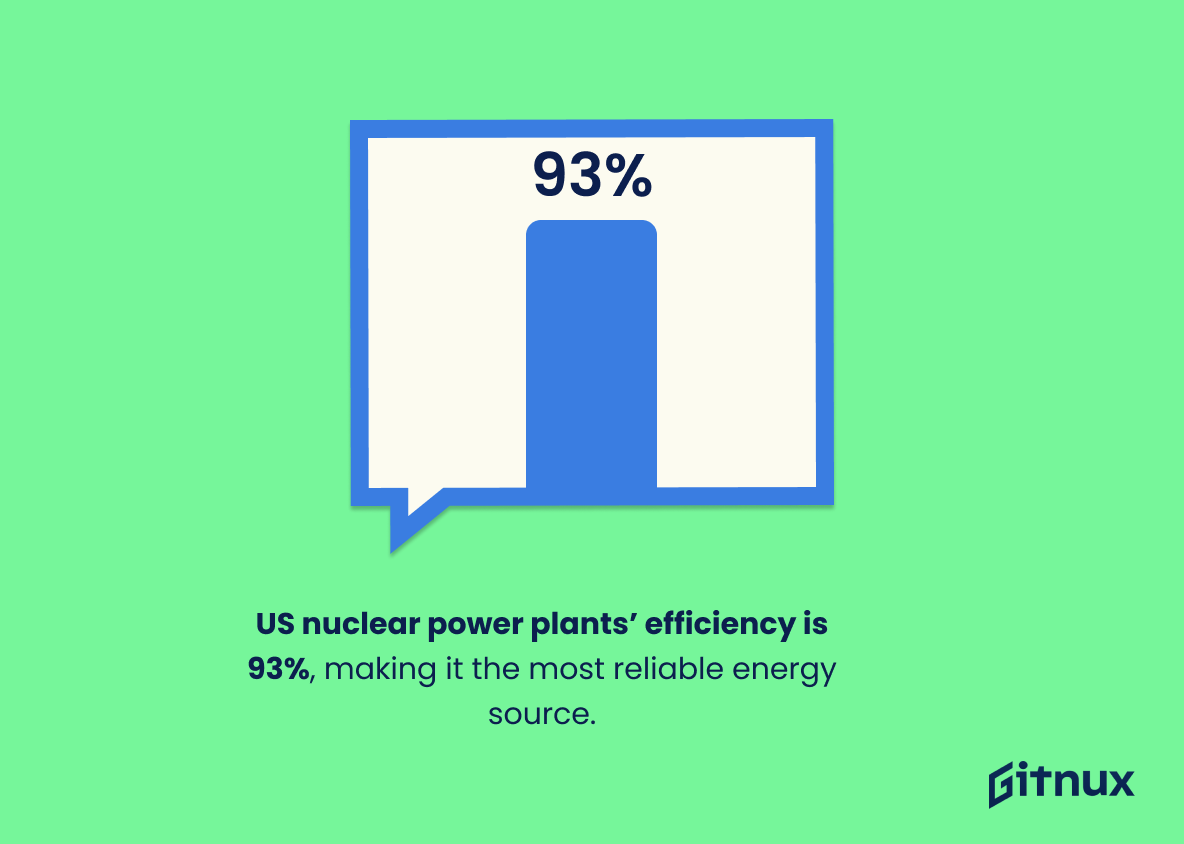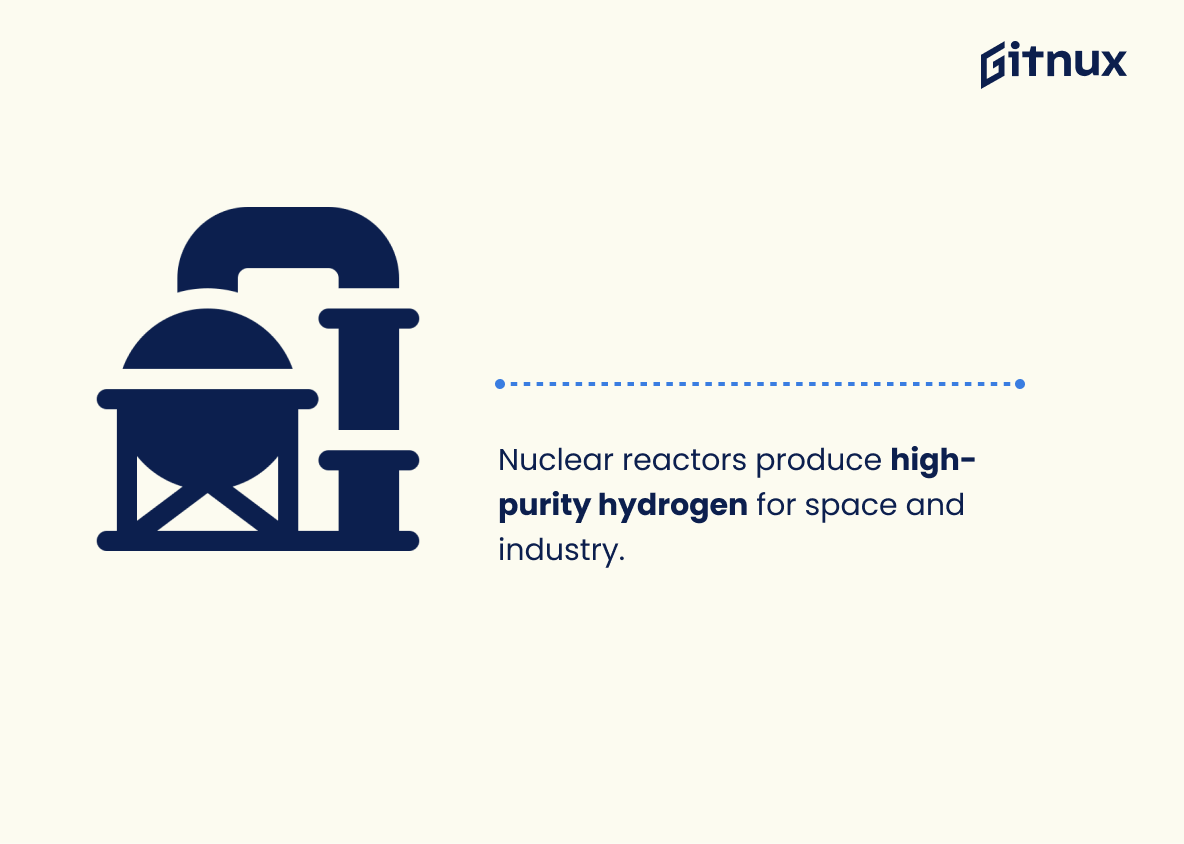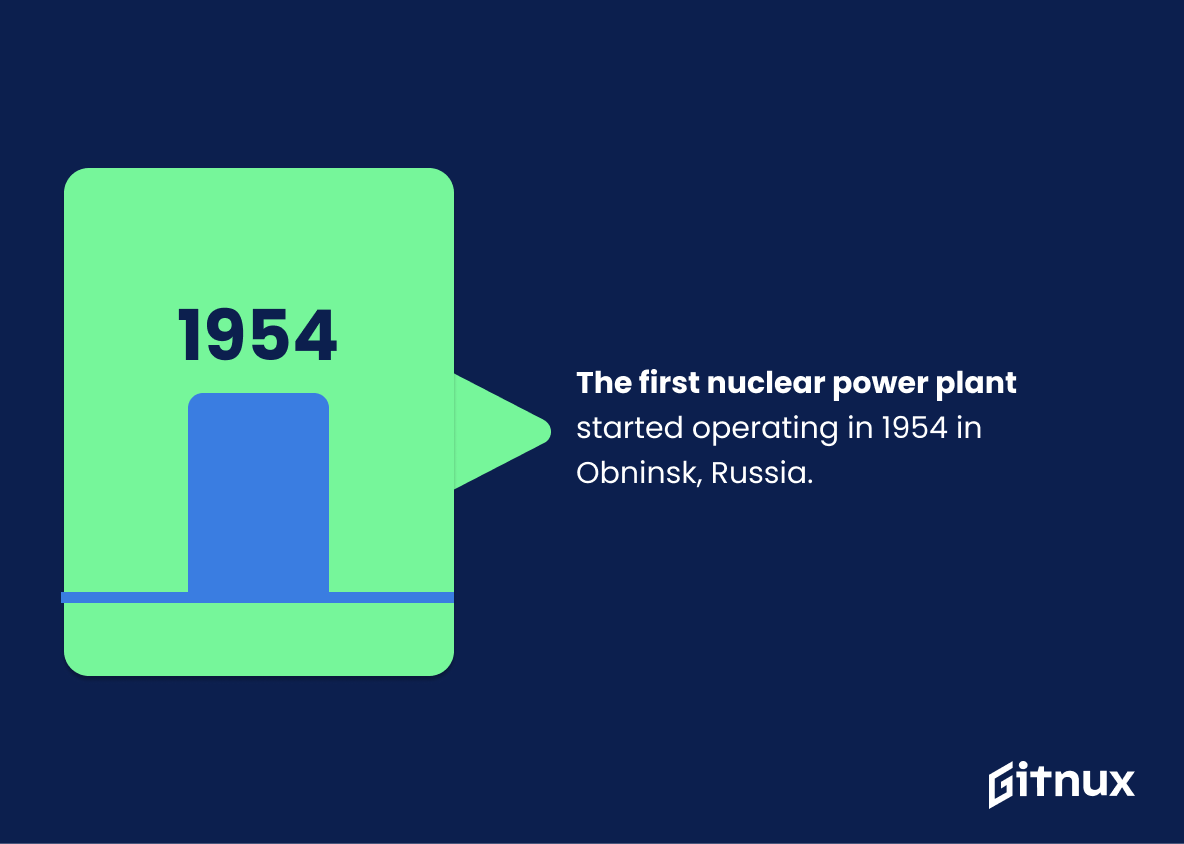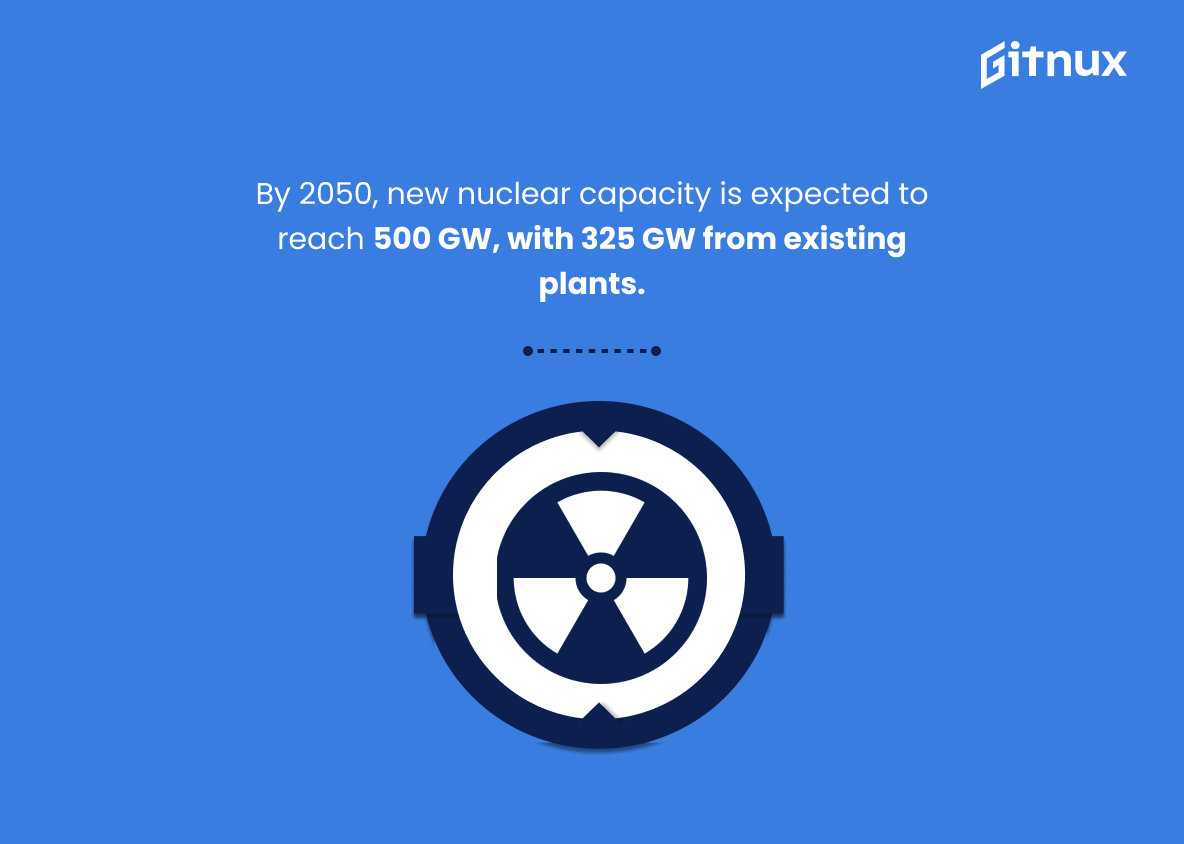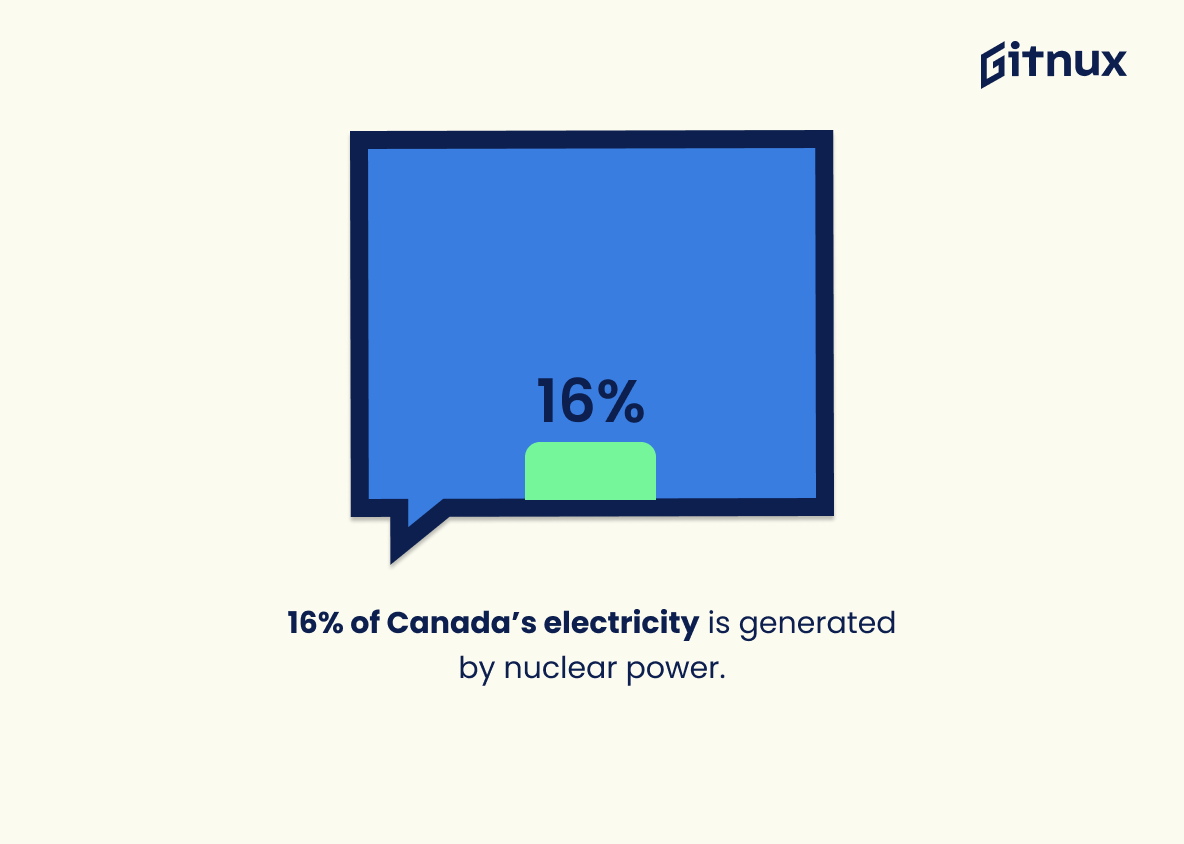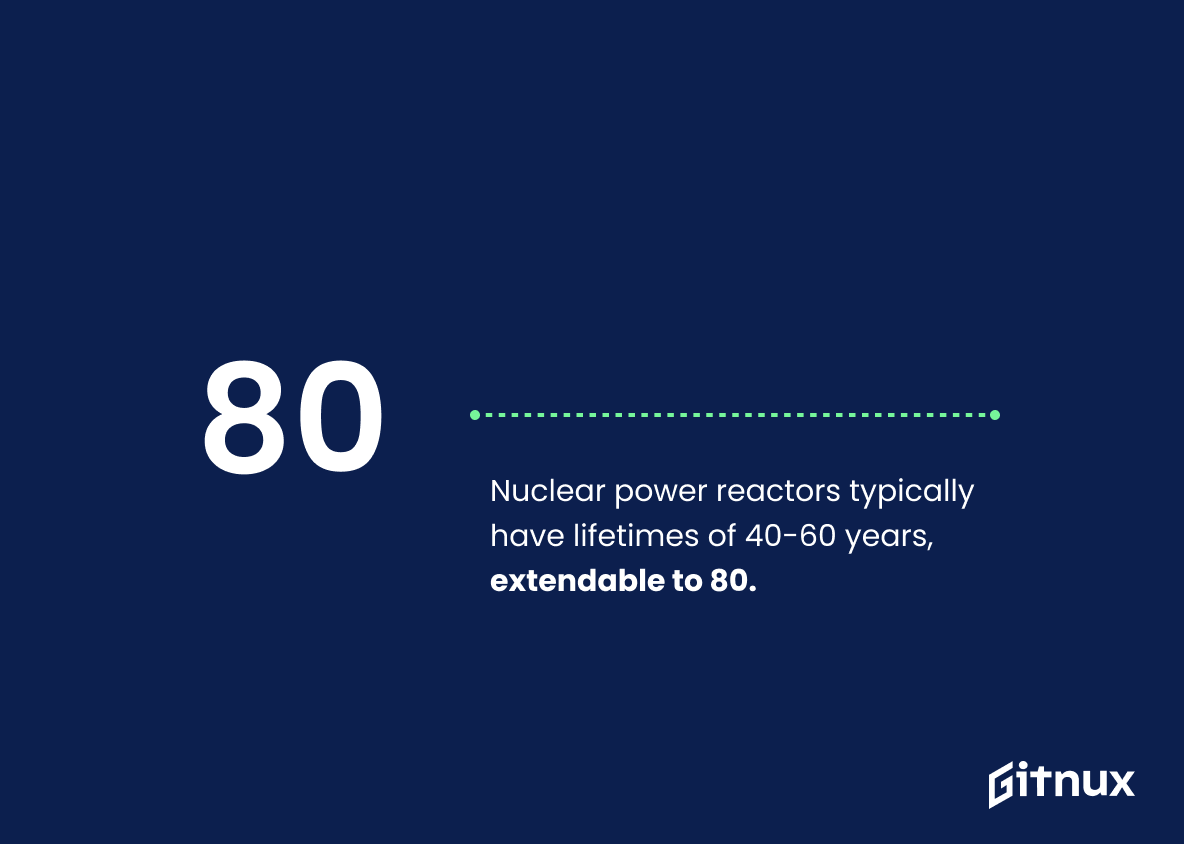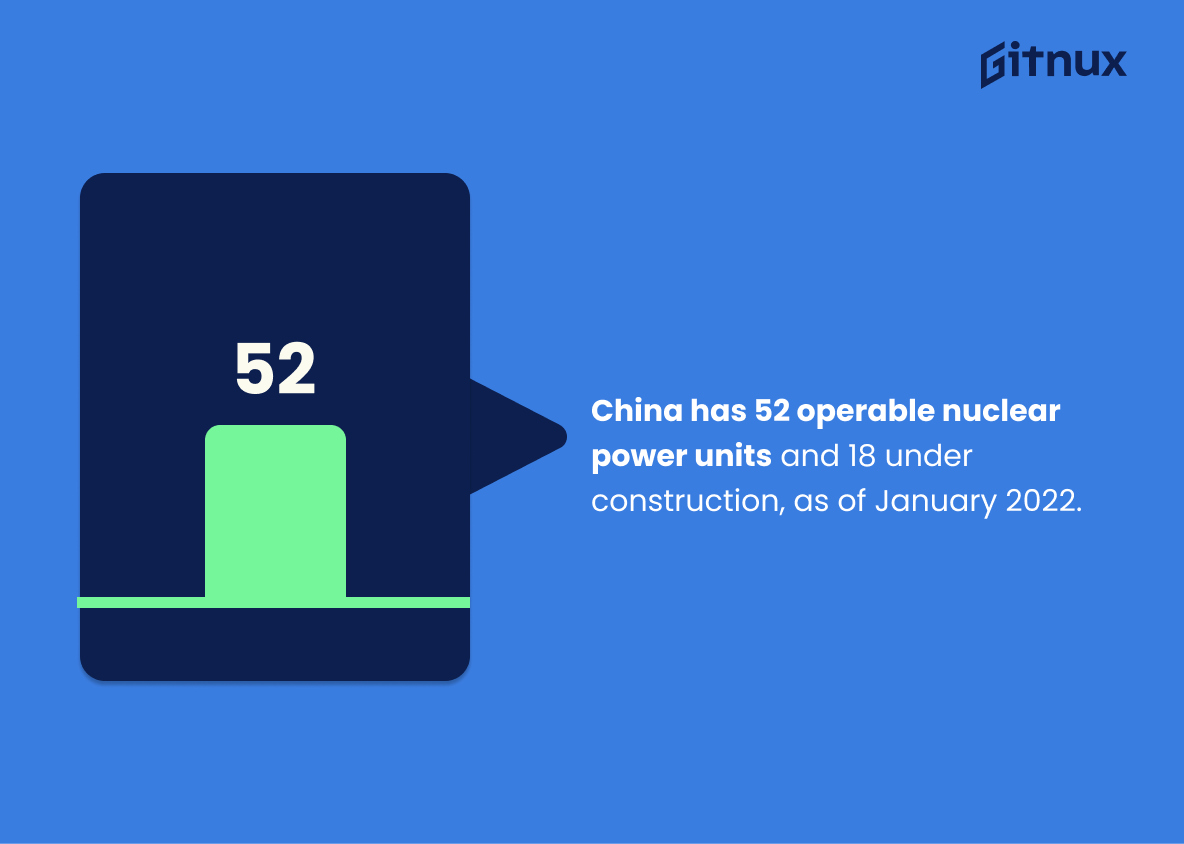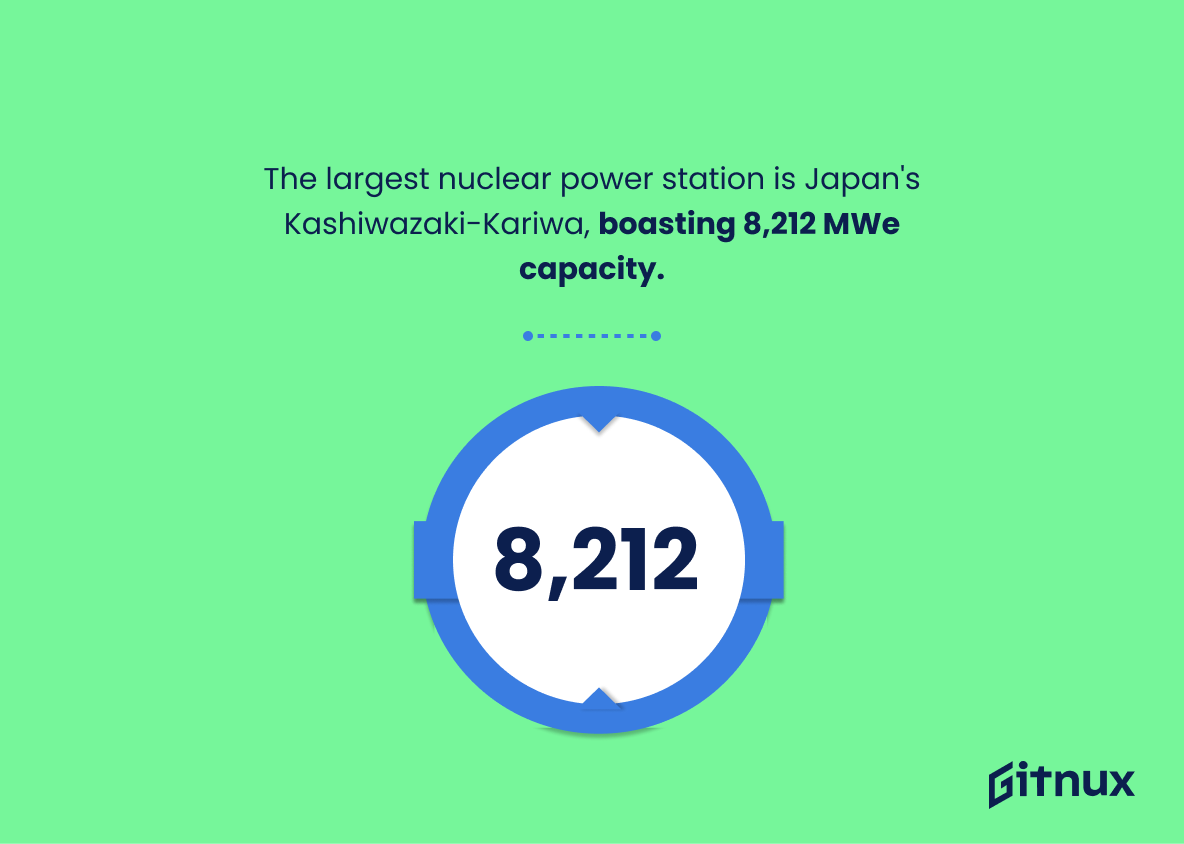Nuclear energy is a reliable and clean source of electricity that has been used for decades to power homes, businesses, and industries around the world. In this blog post, we will explore some interesting statistics about nuclear energy from various sources.
We’ll look at how much of the world’s electricity comes from nuclear energy; how many commercial reactors are currently in operation; what percentage of countries’ total electricity production comes from nuclear power plants; which country produces the most amount of its electricity through nuclear power plants; global operating capacity figures for 2020; CO2 emissions prevented by these plants since 1971; uranium fuel pellet comparison with other fuels like natural gas or coal etc.; hydrogen fuel produced by reactors and more. So let’s dive into it.
This statistic is a powerful indicator of the importance of nuclear energy in the global energy landscape. It demonstrates that nuclear energy is a major source of electricity, and that it is a reliable and efficient way to meet the world’s energy needs. This statistic is especially relevant in a blog post about Nuclear Energy Statistics, as it provides a clear and concise overview of the current state of nuclear energy in the world.
There are 444 commercial nuclear power reactors operable in 30 countries.
This statistic is a testament to the prevalence of nuclear energy in the world today. It shows that nuclear power is a viable energy source for many countries, with 444 reactors in operation across 30 nations. This statistic is a powerful reminder of the importance of nuclear energy in the global energy mix.
Nuclear Energy Statistics Overview
About 20% of the total electricity in the United States is produced through nuclear energy.
This statistic is a powerful indicator of the importance of nuclear energy in the United States. It shows that nuclear energy is a major source of electricity in the country, and that it is a reliable and efficient way to generate electricity. This statistic is important to consider when discussing the potential of nuclear energy as a viable energy source for the future.
France generates about 70% of its electricity from nuclear power.
This statistic is a testament to the power of nuclear energy in France. It demonstrates that nuclear energy is a reliable and efficient source of electricity for the country, providing a significant portion of its energy needs. This statistic is important to consider when discussing the potential of nuclear energy as a viable energy source for other countries.
In 2019, 439.3 TWh of nuclear electricity was generated in the European Union, accounting for 26% of the total electricity produced.
This statistic is a powerful indicator of the importance of nuclear energy in the European Union. It demonstrates that nuclear energy is a major source of electricity production, accounting for a quarter of the total electricity generated in the region. This statistic is a testament to the effectiveness of nuclear energy as a reliable and efficient source of energy, and it is an important piece of information to consider when discussing the benefits of nuclear energy.
Nuclear power plants prevented an estimated 64 gigatonnes of CO2 emissions between 1971 and 2018.
This statistic is a testament to the immense environmental impact of nuclear power plants. By preventing an estimated 64 gigatonnes of CO2 emissions, nuclear power plants have played a major role in reducing the amount of greenhouse gases in the atmosphere. This is an important statistic to consider when discussing the benefits of nuclear energy.
A single uranium fuel pellet (the size of a fingertip) contains the same amount of energy as 17,000 cubic feet of natural gas, 1,780 pounds of coal or 149 gallons of oil.
This statistic is a powerful illustration of the immense energy potential of nuclear fuel. It demonstrates that a tiny pellet of uranium can generate the same amount of energy as a large quantity of natural gas, coal, or oil. This highlights the efficiency of nuclear energy and its potential to provide a clean, reliable source of energy.
The global operating capacity of nuclear power plants in 2020 was 392 gigawatts.
This statistic is a testament to the immense potential of nuclear energy. It shows that nuclear power plants are capable of producing a staggering 392 gigawatts of energy, enough to power millions of homes and businesses around the world. This statistic is a reminder of the immense potential of nuclear energy and its ability to provide clean, reliable, and affordable energy to the world.
US nuclear power plants’ efficiency is 93%, making it the most reliable energy source.
The impressive efficiency of US nuclear power plants, at 93%, is a testament to the reliability of nuclear energy as a source of power. This statistic is a powerful reminder that nuclear energy is a dependable and safe option for providing energy to the nation. It is a key indicator of the effectiveness of nuclear energy and its potential to be a major contributor to the nation’s energy needs.
Nuclear reactors can produce hydrogen fuel, which is mainly used in the space industry and industries that require high-purity hydrogen.
This statistic is significant in the context of nuclear energy statistics because it highlights the potential of nuclear reactors to produce a clean, renewable energy source that can be used in a variety of industries. Hydrogen fuel is a versatile and efficient energy source that can be used in the space industry and other industries that require high-purity hydrogen, making it an attractive option for those looking to reduce their carbon footprint.
The first nuclear power plant started operating in 1954 in Obninsk, Russia.
This statistic serves as a reminder of the long history of nuclear energy, and how far the industry has come since its inception in 1954. It is a testament to the progress made in the field of nuclear energy, and the potential for further development in the future. It is also a reminder of the importance of safety and regulation in the nuclear energy industry, as the first nuclear power plant in Obninsk, Russia, was able to operate safely and efficiently for many years.
By 2050, new nuclear capacity is expected to reach 500 GW, with 325 GW coming from existing nuclear plants.
This statistic is a powerful indicator of the potential of nuclear energy in the future. It shows that nuclear energy is expected to play a major role in meeting global energy needs, with existing nuclear plants providing a significant portion of the total capacity. This is an important reminder that nuclear energy is a viable and reliable source of energy that can help meet the world’s growing energy demands.
South Korea produces 27% of its electricity from nuclear energy.
This statistic is a testament to South Korea’s commitment to nuclear energy as a source of electricity. It highlights the country’s dedication to the development and utilization of nuclear energy, and serves as an example of how nuclear energy can be used to power a nation. Furthermore, it demonstrates the potential of nuclear energy as a viable alternative to traditional sources of electricity.
16% of Canada’s electricity is generated by nuclear power.
This statistic is a testament to the importance of nuclear power in Canada’s energy production. It highlights the fact that nuclear energy is a major source of electricity in the country, and that it plays a significant role in powering the nation. This statistic is especially relevant in a blog post about Nuclear Energy Statistics, as it provides a concrete example of the impact nuclear energy has on Canada’s energy production.
The lifetime of nuclear power reactors is typically 40-60 years with possibilities of extensions up to 80 years.
This statistic is a crucial piece of information when it comes to Nuclear Energy Statistics, as it provides insight into the longevity of nuclear power reactors. Knowing the typical lifetime of these reactors is essential for understanding the long-term implications of nuclear energy, such as the cost of maintenance and the need for replacement. Additionally, the possibility of extensions up to 80 years gives a better understanding of the potential of nuclear energy as a reliable source of energy.
China has 52 operable nuclear power units and 18 under construction, as of January 2022.
This statistic is a testament to China’s commitment to nuclear energy, as they have the most operable nuclear power units in the world and are continuing to expand their nuclear energy infrastructure. It is a clear indication that nuclear energy is an important part of China’s energy mix and that they are investing heavily in its development. This statistic is an important part of understanding the global nuclear energy landscape and the role China plays in it.
The largest nuclear power station is the Kashiwazaki-Kariwa plant in Japan, with a total capacity of 8,212 MWe.
This statistic is a testament to the potential of nuclear energy, as the Kashiwazaki-Kariwa plant is the largest nuclear power station in the world. It demonstrates the sheer amount of energy that can be generated from nuclear sources, and serves as a reminder of the importance of nuclear energy in the global energy mix.
As of September 2021, there are 54 new nuclear power reactors under construction worldwide.
This statistic is a testament to the growing popularity of nuclear energy as a viable source of power. It shows that despite the risks associated with nuclear energy, many countries are still investing in it as a reliable source of energy. This statistic is a clear indication that nuclear energy is here to stay and is likely to become an increasingly important part of the global energy mix in the future.
The average construction time of new nuclear reactors is about 8.8 years, from pouring of first concrete to grid connection.
This statistic is a crucial indicator of the efficiency of nuclear energy production. It demonstrates the amount of time and resources required to build a nuclear reactor, and thus the amount of energy that can be produced in a given period of time. This statistic is essential for understanding the potential of nuclear energy as a reliable and sustainable energy source.
Conclusion
Nuclear energy is a reliable and efficient source of electricity, providing 10% of the world’s total electricity. There are 444 commercial nuclear power reactors operable in 30 countries, with 20% of US electricity coming from nuclear energy and 70% in France. In 2019, 439.3 TWh was generated by EU nuclear plants accounting for 26%. Nuclear power plants have prevented an estimated 64 gigatonnes of CO2 emissions between 1971-2018 while one uranium fuel pellet contains as much energy as 17000 cubic feet natural gas or 149 gallons oil.
The global operating capacity is 392 GW with 93% efficiency rate making it the most reliable source; additionally it can produce hydrogen fuel used mainly in space industry & industries requiring high purity hydrogen. It all started back 1954 when Obninsk Russia operated its first plant & by 2050 new capacity will reach 500GW with 325GW from existing ones; South Korea produces 27%, Canada 16%, China 52 units (18 under construction) & Japan has 8212 MWe Kashiwazaki-Kariwa plant being largest station worldwide where 54 new reactors are currently under construction globally generating 370k metric tons waste mostly low/intermediate level type taking average 8 years to build before grid connection occurs.
References
0. – https://www.nei.org
1. – https://www.ec.europa.eu
2. – https://www.nrcan.gc.ca
3. – https://www.energy.gov
4. – https://www.iaea.org
5. – https://www.world-nuclear.org
6. – https://www.eia.gov
